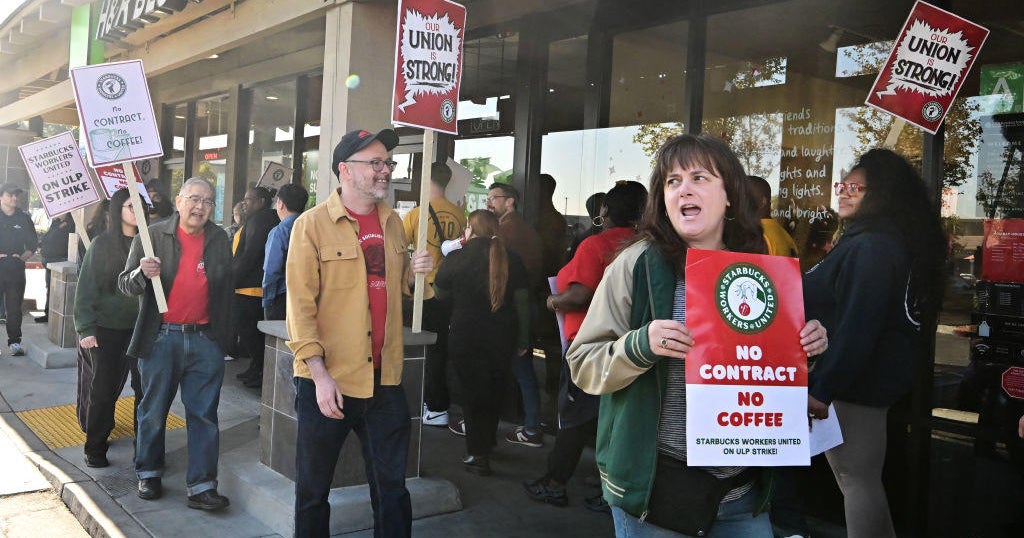Subpar job growth in September heightens economic concerns
Employers added a weaker-than-expected 136,000 jobs in September and wage growth slowed, adding to fears that the U.S. economy is cooling.
Forecasters expected job growth of 145,000. Wages, too, grew more slowly. Average hourly wages grew at 2.9% year-over-year, the first time in more than a year that the rate of increase fell below 3%, although wages for non-managers rose at a stronger 3.5%.
The economy this year has added 161,000 jobs a month on average, below last year's monthly rate of 223,000.
"The air continues to come out of the labor market, but it has not totally deflated," Nick Bunker, an economist with job site Indeed, said in a report.
Although job growth is slowing, it remains strong enough to at least match the number of workers entering the labor force every month, other experts said.
Unemployment near 50-year low
The nation's unemployment rate ticked down to 3.5% — the lowest since December 1969, the Labor Department said Friday.
White House adviser Larry Kudlow told Bloomberg the jobless rate is "something we should all be proud of." But private economists said the surprise drop is largely a statistical quirk of the monthly survey the Labor Department does to determine the unemployment rate, which is calculated separately from the number of jobs created.
"This is as good as it's likely to get until the trade war is resolved," Ian Shepherdson, chief economist at Pantheon Macroeconomics, said in a note. "A sustained further decline in the unemployment rate is very unlikely if payroll growth slows as we expect; indeed, unemployment is likely to rise over the winter."
Wage growth cools
Wage growth this year peaked in February, increasing at a 3.4% annual rate, and has been trending downward since. That's far below the pace at which wages should be growing, considering the historically low unemployment, economists say.
"When people see the current modest wage growth, they're forgetting most workers are struggling to get back to 2008," Bill Spriggs, chief economist for the AFL-CIO, told CBS MoneyWatch this week. "We're way, way away from where we're supposed to be."
Other signals in the report were more positive, showing a resilient labor market even as the economy cools. The number of marginally attached workers, who want a job but are not counted as unemployed because they have not looked for work in the month before the survey, dropped by about 280,000.
Trade worries spread
Manufacturing hiring was flat in September, as were other blue-collar sectors including mining, construction, and wholesale trade. Health care added 39,000 jobs last month, while professional and business services added 34,000. Government added 22,000 jobs, mostly at the state and local level.
Hiring for the past two months was revised upward by 45,000 jobs, putting August close to what economists had initially expected. Still, the numbers cap off a week of worrisome economic data that show the services sector, which makes up the bulk of U.S. economic activity, growing at its slowest rate in at least three years. Another key sector, manufacturing, has also tumbled into recession in recent months.
The weakening in services show that the U.S. trade war is finally catching up to employment numbers, which are typically slow to respond to economic shifts.
"September 1 may have been a turning point there, since tariffs were extended to a broader range for consumer product that they weren't affecting before," said Julia Pollak, chief economist at ZipRecruiter. "Many manufacturers are getting these surprise bills, and it's causing them to reevaluate investment and hiring."
For example, one California cosmetics maker that imports bottles, jars and other packaging from China was hit by a surprise tariff bill of $700,000 last month, Pollak said. "That makes it no longer feasible for him to continue that product line."
Another interest rate cut?
Stocks saw a bright side in the September report, rising on hopes that the soft job figures will spur the Federal Reserve to further cut interest rates. The central bank has cut its benchmark interest rate twice this year in a bid to keep the economy growing.
The Dow, S&P 500 and Nasdaq all rose half a percentage point early Friday morning.
"On balance, today's report still shows slow job creation and very low wage pressures, leaving inflation expectations depressed. The Fed should still be in play to cut rates in October," analysts at Bank of America Merrill Lynch said in a report.



